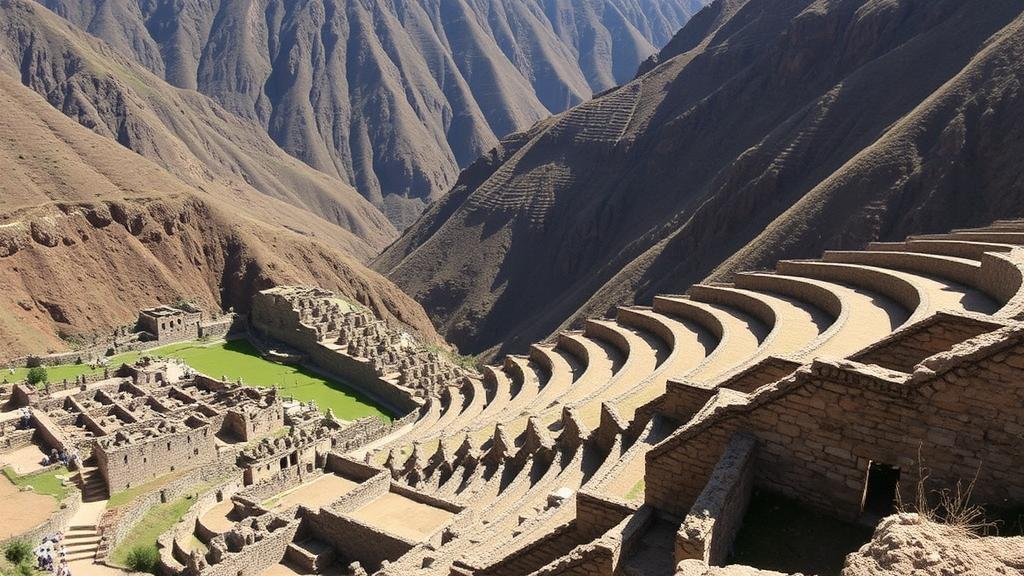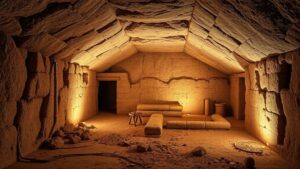Investigating the unknown builders of the stone terraces of Ollantaytambo in Peru.
Investigating the Unknown Builders of the Stone Terraces of Ollantaytambo in Peru
The archaeological site of Ollantaytambo, located in the Sacred Valley of Peru, presents a fascinating case study of ancient construction techniques and enigmatic builders. This site is distinguished by its impressive stone terraces, which were constructed from large blocks of andesite and limestone. Despite the significance of these terraces, the precise identity of their builders remains a subject of scholarly inquiry and debate.
The Historical Context of Ollantaytambo
Ollantaytambo is believed to have originated as a military, agricultural, and religious complex during the Inca Empire, which thrived from the 15th to the 16th century. terraces were likely developed around the time of Pachacuti, the ninth Sapa Inca, who ruled from 1438 to 1471. This ruler is renowned for expanding the Inca territory and is often credited with a range of architectural projects including Machu Picchu. The strategic location of Ollantaytambo adds to its historical significance, acting as a gateway to the forested area of Machu Picchu and serving as a military stronghold against possible invaders.
Architectural Features of the Terraces
The stone terraces of Ollantaytambo cover approximately 3,500 hectares and are built into the steep slopes of the Andes mountains. Key features of these terraces include:
- Stability: The terraces were constructed using a technique called ashlar masonry, which involves fitting stones together without mortar, providing remarkable durability.
- Water Control: An intricate system of aqueducts managed water flow for agricultural purposes, showcasing the builders understanding of hydraulic engineering.
- Terracing Design: The design of the terraces allowed for maximum sun exposure, which was critical for crop growth in the high-altitude environment.
Theories on the Builders
Several theories have emerged regarding the identity of the builders of the Ollantaytambo terraces:
- Inca Builders: The dominant hypothesis is that the Incas built the terraces as part of their agricultural expansions. But, specific stylistic characteristics of the stonework have led some experts to argue that earlier cultures, such as the Wari or Maras, might have contributed to their construction.
- Tiwanaku Influence: Some archaeologists have drawn parallels between the architectural style of Ollantaytambo and the Tiwanaku civilization, which flourished near Lake Titicaca. This suggests that highland communication networks and cross-cultural influences may have played a role in the sites development.
Archaeological Research and Discoveries
Archaeological research at Ollantaytambo has provided significant insights into Inca engineering practices and societal organization. Excavations have revealed various artifacts, including ceramics, tools, and agricultural remains. In particular, a study by the National Geographic Society in 2003 employed aerial photography and ground-penetrating radar to reveal further details of the site’s layout and hydraulic systems.
Current Research Directions
Today, research at Ollantaytambo continues to evolve, spurred by advancements in technology and a renewed interest in agrarian societies. Ongoing studies are focusing on:
- Genetic Studies: Researchers are analyzing local crop varieties to understand the farming methods and crop domestication practices used by the builders.
- Digital Mapping: Using 3D modeling and mapping technology, archaeologists are preserving the site’s integrity and revealing its full extent and structural complexities.
Real-World Applications of Findings
The outcomes of investigations into the terraces are not merely academic; they inform modern agricultural practices in the Andes. By studying ancient construction methods and sustainability practices, contemporary farmers may adopt techniques that are better suited to the challenging climate, thereby enhancing food security in the region.
Conclusion: The Legacy of Ollantaytambo
The stone terraces of Ollantaytambo represent not only stunning architectural accomplishments but also a window into the life and society of the Andean civilizations. Though their exact builders may remain shrouded in mystery, ongoing research and exploration will continue to peel back layers of history, providing a deeper understanding of this extraordinary site. The lessons learned from Ollantaytambo have implications that resonate in both historical contexts and present-day agricultural methodologies.
As we uncover the past, we not only gain insights into the capabilities and innovations of ancient civilizations but also recognize the enduring impact of their environmental stewardship and adaptive strategies that can inspire future generations.



